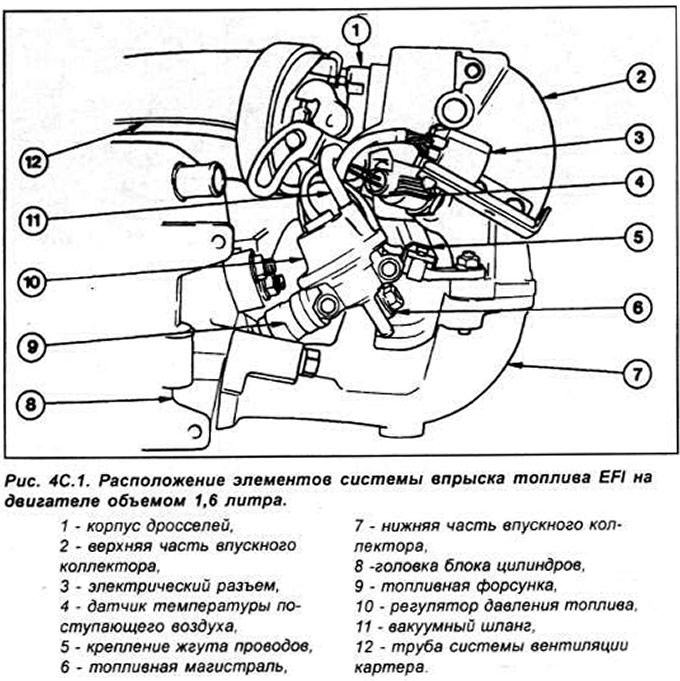
Idle speed can be adjusted by turning the adjuster screw (plugged) in the throttle body. The mixture quality can be adjusted by turning the potentiometer mounted on the baffle.
The ECU controls the fuel injection, ignition and exhaust system. The ECU receives information from various sensors and determines the engine temperature, vehicle speed, load and the amount of air entering the engine. The sensors also provide information regarding throttle position, intake air temperature and the oxygen content of the exhaust gases. All information supplied to the ECU is compared with preset values stored in the ECU memory and determines the required fuel injection period. Information regarding engine speed comes from the crankshaft angle sensor. This is an inductive pulse generator that determines the passage of ridges between 36 holes. located on the inside of the flywheel. As each ridge passes, a signal is induced near the sensor, which is used by the ECU to determine the engine speed. There is no ridge between holes 35 and 36, and by the absence of a sensor signal, the ECU determines the position of the crankshaft.
To determine the temperature of the engine, a sensor is used, which is a thermistor. those semiconductors whose electrical resistance decreases with increasing temperature. This signal is used to determine the optimum composition of the fuel mixture at a certain engine temperature.
Information about the temperature of the incoming air is determined by the sensor, which is a thermistor with a negative temperature coefficient. This information is also used by the ECU to determine the optimum fuel mixture for a given air temperature. The throttle position sensor is mounted on the end of the throttle shaft and supplies the ECU with a constantly changing signal corresponding to the throttle opening value.
Vehicle speed is determined by the speed sensor, which is installed on the gearbox speedometer drive.
The MAP sensor measures intake manifold vacuum and provides information to the ECU to determine engine load at a particular throttle position. If the vehicle is equipped with power steering, a fluid pressure sensor in the power steering system is used.
An oxygen sensor installed in the exhaust system provides constant feedback that allows the fuel mixture to be adjusted for normal operation of the catalyst.
Visitor comments